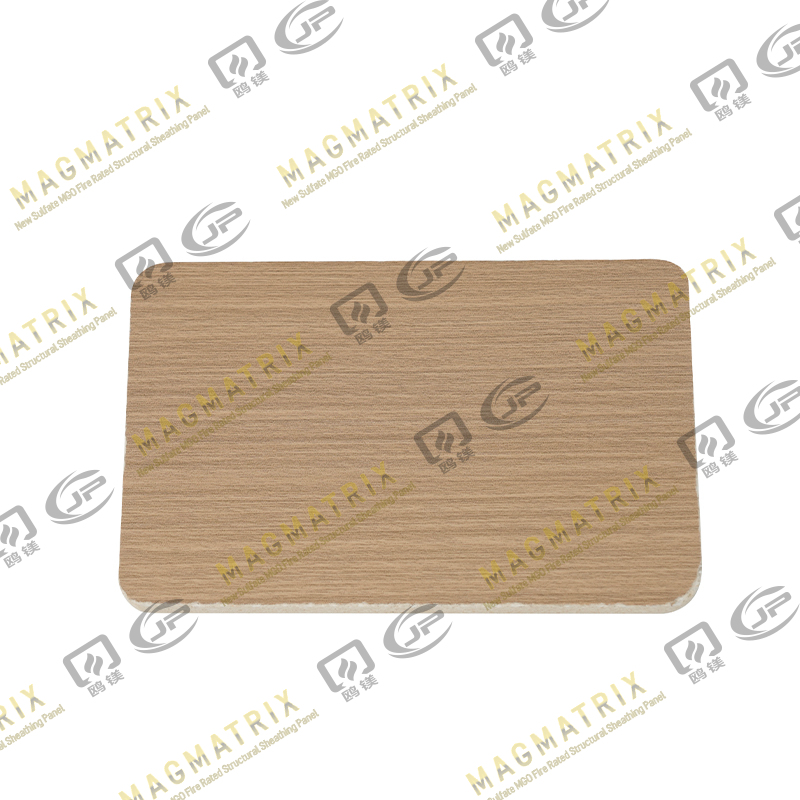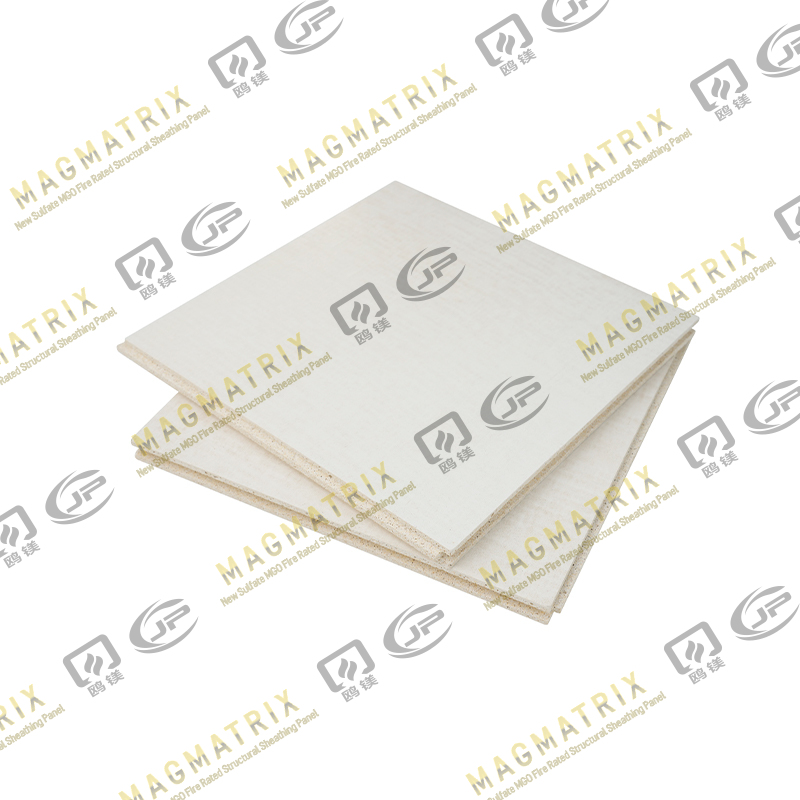Key Takeaways
Versatile Material: MgO board is a multi-purpose building material suitable for a wide range of interior and exterior applications.
Superior Resistance: It offers excellent resistance to fire, moisture, mold, mildew, insects, and certain chemicals.
Durable and Stable: Known for its high strength, impact resistance, and dimensional stability, making it a long-lasting construction solution.
Eco-Friendly Choice: Manufactured with sustainable practices and often free from harmful chemicals, contributing to healthier indoor air quality.
Growing Popularity: Increasingly recognized as an effective and sustainable alternative to traditional building materials like drywall and fiber cement.
MgO board's unique combination of strength, durability, and resistance makes it an exceptionally versatile material for diverse construction needs. From standard residential projects to specialized commercial builds, its adaptability allows for a broad spectrum of uses that enhance both the safety and longevity of structures.
Indoor Uses
Within interior spaces, MgO board excels due to its excellent resistance properties and ease of integration. It serves as a reliable material for walls, ceilings, and subflooring, particularly in areas prone to moisture or requiring enhanced fire protection. Its smooth finish also makes it suitable as a substrate for various finishes, including paint, plaster, and tiles, providing a durable and stable base.
| Indoor Application |
Description |
Key Benefit |
| Walls and Ceilings |
Replaces traditional drywall in residential and commercial buildings. |
Fire-rated, moisture-resistant, and mold-proof. |
| Wet Areas |
Ideal for bathrooms, kitchens, laundries, and basements. |
Prevents mold and mildew growth in high-humidity environments. |
| Subflooring |
Used as a stable and durable base for various flooring types. |
Strong, impact-resistant, and won't rot or swell. |
| Fire-Rated Assemblies |
Crucial component in fire-rated wall and ceiling systems. |
Provides superior fire resistance, limiting flame spread. |
| Decorative Panels |
Can be painted, plastered, or tiled over for aesthetic finishes. |
Smooth surface for finishes, durable and long-lasting. |
Outdoor Uses
MgO board's resilience against environmental factors makes it an excellent choice for exterior applications. Its ability to withstand moisture, extreme temperatures, and insect infestation extends its utility beyond the confines of indoor construction. It is increasingly being used for exterior sheathing, soffits, fascias, and even as a base for exterior finishes, offering a durable and weather-resistant solution.
| Outdoor Application |
Description |
Key Benefit |
| Exterior Sheathing |
Forms the outer layer of walls, protecting against weather. |
Weather-resistant, impact-resistant, and provides structural stability. |
| Soffits and Fascias |
Used in eaves and roofline trim for protection and aesthetics. |
Durable, moisture-resistant, and holds up well to outdoor elements. |
| Exterior Cladding Substrate |
Provides a stable and durable base for various exterior finishes like stucco or stone. |
Dimensionally stable, resists cracking, and rot-proof. |
| Outdoor Kitchens/Enclosures |
Suitable for constructing durable and weather-resistant outdoor structures. |
Withstands moisture, temperature fluctuations, and pest infestations. |
| Fencing and Privacy Screens |
Can be used for decorative and functional outdoor barriers. |
Long-lasting, low maintenance, and resistant to decay. |
Specialized Applications
Beyond general construction, MgO board finds its niche in specialized applications where its unique properties are particularly advantageous. This includes its use in cleanrooms due to its non-toxic and mold-resistant nature, in soundproofing projects for its density, and even in theatrical sets and displays where fire resistance and ease of manipulation are crucial. Its adaptability allows it to meet the stringent requirements of diverse and demanding environments.
| Specialized Application |
Description |
Key Benefit |
| Cleanrooms |
Used in controlled environments requiring minimal particulate contamination. |
Non-toxic, mold-resistant, and non-shedding. |
| Soundproofing |
Incorporated into walls and ceilings to reduce noise transmission. |
High density contributes to excellent acoustic insulation. |
| Theatrical Sets & Displays |
Utilized for backdrops, props, and temporary structures. |
Fire-resistant, lightweight for handling, and easy to cut/shape. |
| HVAC Ductwork |
Can be used as a fire-resistant and mold-resistant alternative for ducting. |
Improves indoor air quality and enhances fire safety. |
| Prefabricated Buildings |
Component in modular and pre-engineered construction for rapid assembly. |
Lightweight, strong, and contributes to efficient building processes. |
Resistant Properties of MgO Board

One of the primary reasons for MgO board's growing popularity is its remarkable array of resistant properties. These inherent characteristics make it a highly desirable material for construction projects where safety, longevity, and low maintenance are crucial. Understanding these properties helps illustrate why MgO board is often a superior alternative to conventional building materials in challenging environments.
Fire Resistant Uses
MgO board is inherently non-combustible and boasts exceptional fire resistance, making it a critical component in fire-rated assemblies. Unlike many traditional building materials that contribute fuel to a fire, MgO board acts as a barrier, slowing the spread of flames and providing valuable time for evacuation and fire suppression. Its performance in fire tests consistently demonstrates its ability to withstand high temperatures without igniting or releasing toxic smoke.
| Fire Resistant Property |
Description |
Benefit in Construction |
| Non-Combustible |
Does not ignite or burn when exposed to flame. |
Prevents fire spread and reduces fuel load in buildings. |
| High Melting Point |
Withstands extreme temperatures without melting or deforming. |
Maintains structural integrity longer during a fire event. |
| Low Smoke & Toxicity |
Emits minimal smoke and no toxic fumes when exposed to fire. |
Enhances occupant safety and aids visibility for emergency responders. |
| Fire-Rated Assemblies |
Crucial component in achieving specific fire-rating requirements (e.g., 1-hour, 2-hour). |
Meets strict building codes for fire safety in various structures. |
| Thermal Insulation |
Offers some thermal insulation, slowing heat transfer during a fire. |
Contributes to limiting temperature rise on the unexposed side of a wall. |
Moisture and Mold Resistance
MgO board's composition makes it highly resistant to moisture absorption, which in turn significantly inhibits the growth of mold and mildew. Unlike gypsum-based drywall, which can act as a food source for mold in damp conditions, MgO board remains stable and inert. This property is particularly beneficial in humid climates, wet areas like bathrooms and kitchens, and in basements where moisture control is a constant challenge.
| Moisture & Mold Resistant Property |
Description |
Benefit in Construction |
| Water-Resistant |
Low water absorption, preventing swelling, warping, or deterioration. |
Ideal for wet areas, exterior applications, and humid climates. |
| Mold & Mildew Proof |
Inorganic composition means it does not feed mold or mildew. |
Promotes healthier indoor air quality and reduces maintenance in damp areas. |
| Dimensional Stability |
Maintains shape and size even with changes in humidity. |
Prevents cracking and structural issues often seen with moisture-sensitive materials. |
| Breathable |
Allows for vapor transmission, preventing moisture trapping within walls. |
Helps manage moisture within wall cavities, reducing condensation issues. |
| Rot-Proof |
Will not rot or decay due to prolonged exposure to water. |
Ensures long-term durability in environments prone to moisture. |
Chemical and Insect Resistance
Beyond fire and moisture, MgO board exhibits resistance to a range of chemicals and is naturally impervious to insect infestation. Its inorganic composition means it does not provide a food source for termites, carpenter ants, or other pests that can severely damage traditional wood-based materials. Furthermore, its chemical stability makes it suitable for environments where exposure to certain mild chemicals might be a concern, without degrading its structural integrity.
| Chemical & Insect Resistant Property |
Description |
Benefit in Construction |
| Insect & Pest Proof |
Inorganic composition means it is not a food source for termites or other pests. |
Eliminates the need for chemical treatments against pests; extends building lifespan. |
| Chemical Resistance |
Resists degradation from exposure to certain mild chemicals. |
Suitable for labs, industrial settings, or areas requiring chemical wash-downs. |
| Non-Corrosive |
Does not promote corrosion of metal fasteners or framing. |
Ensures long-term structural integrity when used with metal components. |
| Alkali Resistance |
Stands up well to alkaline environments. |
Important for certain construction chemicals or ground contact applications. |
Magnesium Oxide Boards in Construction

The remarkable properties of MgO board translate into significant advantages when integrated into various construction methodologies. Its strength, stability, and broad resistance profile make it a compelling choice for both foundational structural elements and specialized applications, offering long-term benefits in terms of durability, safety, and environmental impact.
Structural Applications
Despite its relatively lightweight nature compared to some traditional materials, MgO board possesses high compressive and flexural strength, making it suitable for certain structural applications. It can be used as a shear wall bracing, subflooring, and even as a component in structural insulated panels (SIPs), contributing to the overall stability and rigidity of a building. Its ability to withstand impact also adds to its structural resilience, offering enhanced protection against everyday wear and tear.
| Structural Application |
Description |
Key Structural Benefit |
| Shear Wall Bracing |
Used to provide lateral stability to walls against wind and seismic forces. |
High shear strength, contributes to overall building rigidity and safety. |
| Subflooring |
Forms a solid and stable base for finished flooring materials. |
High compressive strength, resists deflection and provides a durable foundation. |
| Structural Insulated Panels (SIPs) |
Can be used as the skin for SIPs, creating strong, insulated building components. |
Adds strength, fire resistance, and dimensional stability to efficient building systems. |
| Exterior Sheathing (Structural) |
When properly fastened, can contribute to the structural integrity of exterior walls. |
Provides a robust and durable outer layer that enhances wall bracing. |
| Impact Resistant Walls |
Ideal for high-traffic areas or where impact resistance is crucial. |
Withstands significant impact without cracking or breaking. |
Acoustic Solutions
MgO board's density and inherent composition contribute to its excellent acoustic properties, making it an effective material for sound dampening and noise reduction. When incorporated into wall and ceiling assemblies, it helps to block and absorb sound waves, creating quieter and more comfortable indoor environments. This makes it particularly valuable in multi-family dwellings, commercial spaces, and buildings located in noisy areas where sound control is a priority.
| Acoustic Application |
Description |
Key Acoustic Benefit |
| Soundproofing Walls |
Used as a layer within wall assemblies to reduce sound transmission. |
High density helps block airborne sound, improving Sound Transmission Class (STC) ratings. |
| Acoustic Ceilings |
Contributes to sound absorption and reduction of reverberation in rooms. |
Helps create quieter interior spaces, especially in commercial or public buildings. |
| Floor Underlayment |
Can be used under finished flooring to reduce impact noise between floors. |
Minimizes footfall and other impact sounds for improved acoustic comfort. |
| Room-within-a-Room |
Ideal for constructing isolated rooms for recording studios or home theaters. |
Creates an effective barrier against external noise and internal sound leakage. |
| HVAC Enclosures |
Used to reduce noise emanating from mechanical systems. |
Dampens vibrations and airborne noise from machinery. |
Eco-Friendly Benefits
In an era of increasing environmental consciousness, MgO board stands out as a highly sustainable building material. Its manufacturing process is less energy-intensive compared to traditional cement-based products, and it is largely composed of naturally occurring minerals. Furthermore, MgO board is free from many harmful chemicals found in other building materials, such as formaldehyde, asbestos, and crystalline silica, contributing to healthier indoor air quality. Its durability and resistance to decay also mean a longer lifespan for buildings, reducing waste and the need for frequent replacements.
| Eco-Friendly Benefit |
Description |
Impact on Sustainability |
| Sustainable Sourcing |
Made from abundant natural minerals (magnesium oxide). |
Reduces reliance on non-renewable resources. |
| Low Embodied Energy |
Manufacturing process is less energy-intensive than cement. |
Lower carbon footprint associated with production. |
| Non-Toxic & Healthy |
Free from formaldehyde, asbestos, silica, and other harmful VOCs. |
Improves indoor air quality and occupant health. |
| Recyclable |
Can potentially be crushed and reused as aggregate or filler. |
Reduces landfill waste at the end of its life cycle. |
| Durable & Long-Lasting |
Resistant to rot, mold, and pests, leading to a longer lifespan. |
Reduces the need for frequent replacements, conserving resources. |
| Reduced Waste |
Dimensionally stable and less prone to damage during installation. |
Minimizes construction waste on job sites. |
FAQ
To further assist those considering or working with MgO board, here are answers to some frequently asked questions.
Q: What tools cut MgO board?
A: MgO board can be cut using standard woodworking tools. For straight cuts, a utility knife and a straight edge can score and snap thinner boards. For thicker boards or more intricate cuts, a circular saw with a carbide-tipped blade (preferably a diamond-tipped blade for extended life) is recommended. A jigsaw can be used for curves and cutouts. Always wear appropriate personal protective equipment, including a dust mask or respirator, safety glasses, and gloves, as cutting MgO board can produce fine dust.
Q: Can MgO board replace drywall?
A: Yes, in many applications, MgO board can effectively replace drywall (gypsum board). It offers several advantages over traditional drywall, including superior fire resistance, exceptional moisture and mold resistance, and greater impact strength. While installation techniques are similar, some differences exist, such as the need for specific fasteners and joint compounds designed for MgO board. For areas prone to moisture, fire-rated assemblies, or where enhanced durability is desired, MgO board is often a superior alternative.
Q: Is MgO board safe for indoor air quality?
A: Absolutely. One of the significant advantages of MgO board is its contribution to healthy indoor air quality. It is naturally free from many harmful substances commonly found in other building materials, including formaldehyde, asbestos, and crystalline silica. It does not off-gas volatile organic compounds (VOCs) and is highly resistant to mold and mildew growth, which are major contributors to poor indoor air quality and respiratory issues. This makes it an excellent choice for homes, schools, hospitals, and other sensitive environments.
Q: How long does MgO board last outside?
A: When properly installed and finished for exterior applications, MgO board is exceptionally durable and can last for many decades, often exceeding the lifespan of traditional exterior sheathing materials. Its inherent resistance to moisture, rot, insects, and UV degradation contributes significantly to its longevity. However, like any exterior material, proper detailing, flashing, and appropriate finishes are crucial to ensure its long-term performance and to protect it from continuous standing water or extreme abrasion.
Q: Where should builders avoid using MgO board?
A: While MgO board is highly versatile, there are a few considerations for its use. Builders should be cautious about using it in situations where it will be continuously immersed in water (e.g., as a direct foundation for a pond) unless specifically treated or designed for such extreme conditions. Also, while it is chemical-resistant, prolonged exposure to highly acidic or corrosive chemicals should be avoided unless the specific product is rated for such exposure. Always refer to the manufacturer's guidelines for specific application limitations and best practices.
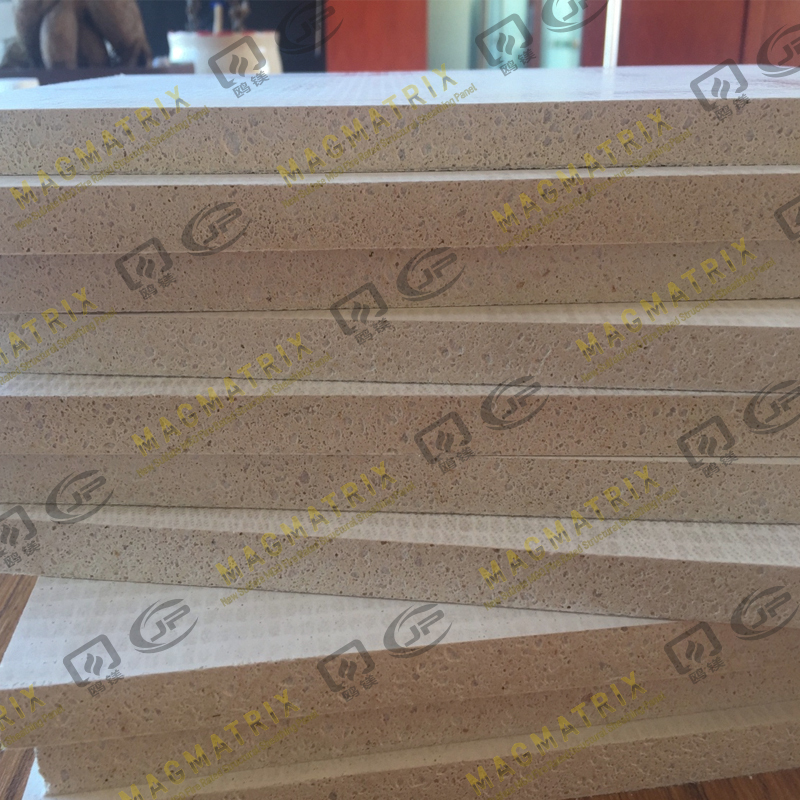 BMSC 517 New Sulfate MgO Board
BMSC 517 New Sulfate MgO Board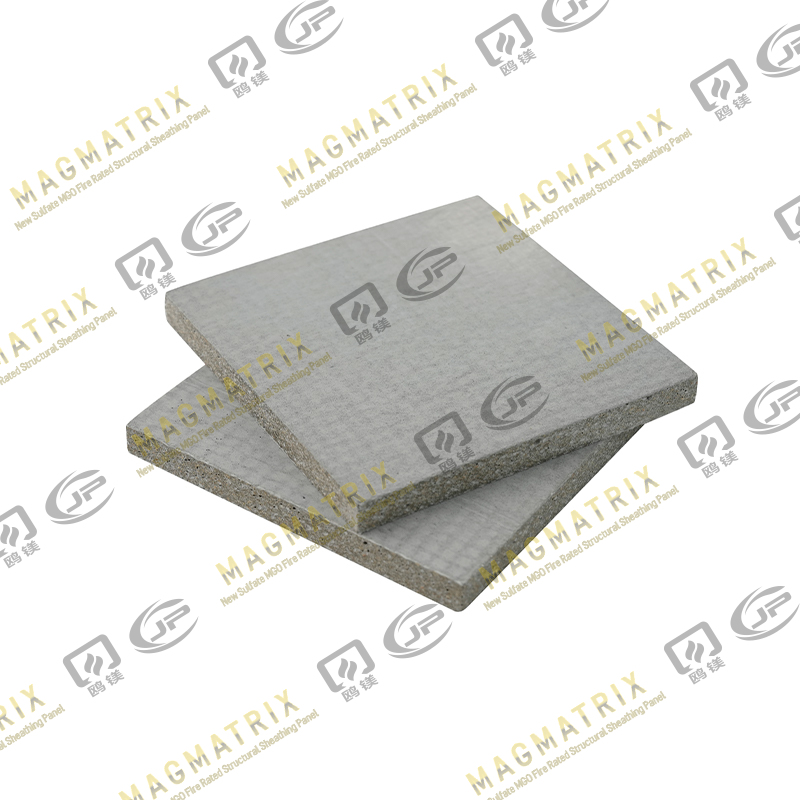 Multi-Support MgO Wall Sheathing Board
Multi-Support MgO Wall Sheathing Board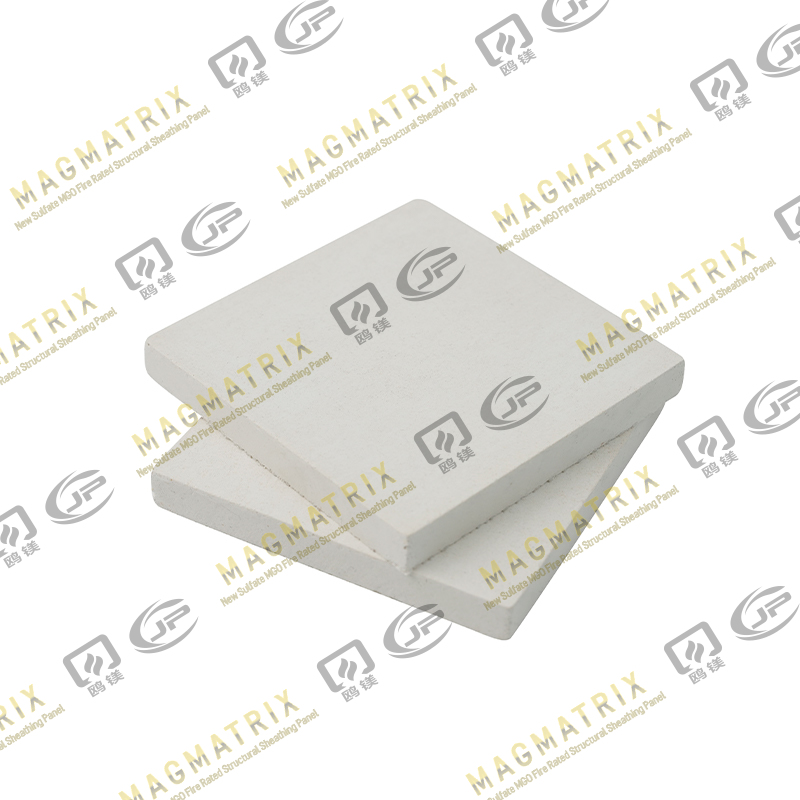 Perseverance MgO Wall Sheathing Board
Perseverance MgO Wall Sheathing Board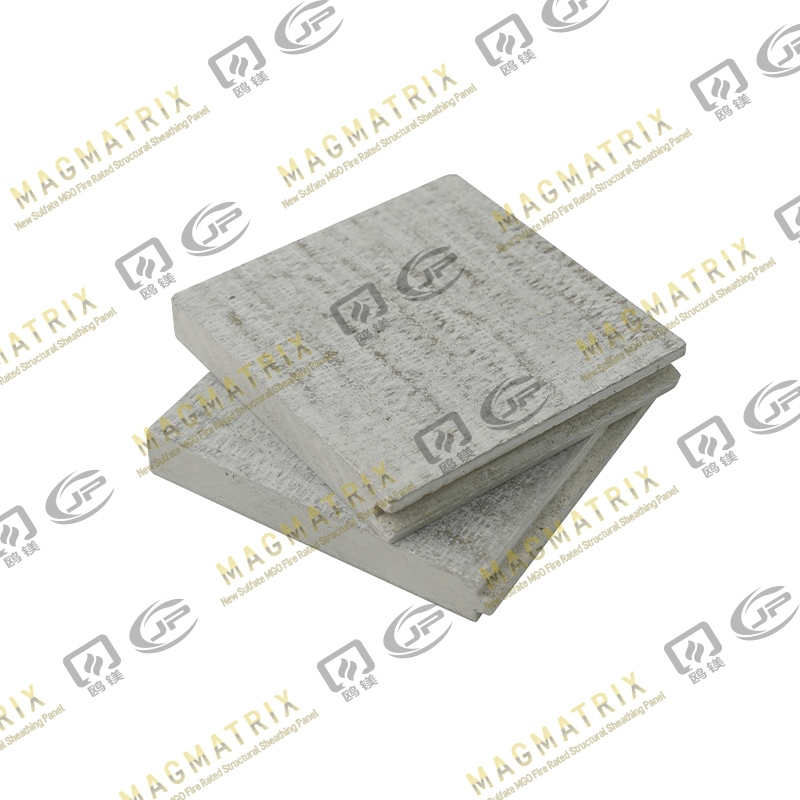 Multi-Support MgO Subfloor Sheathing Board
Multi-Support MgO Subfloor Sheathing Board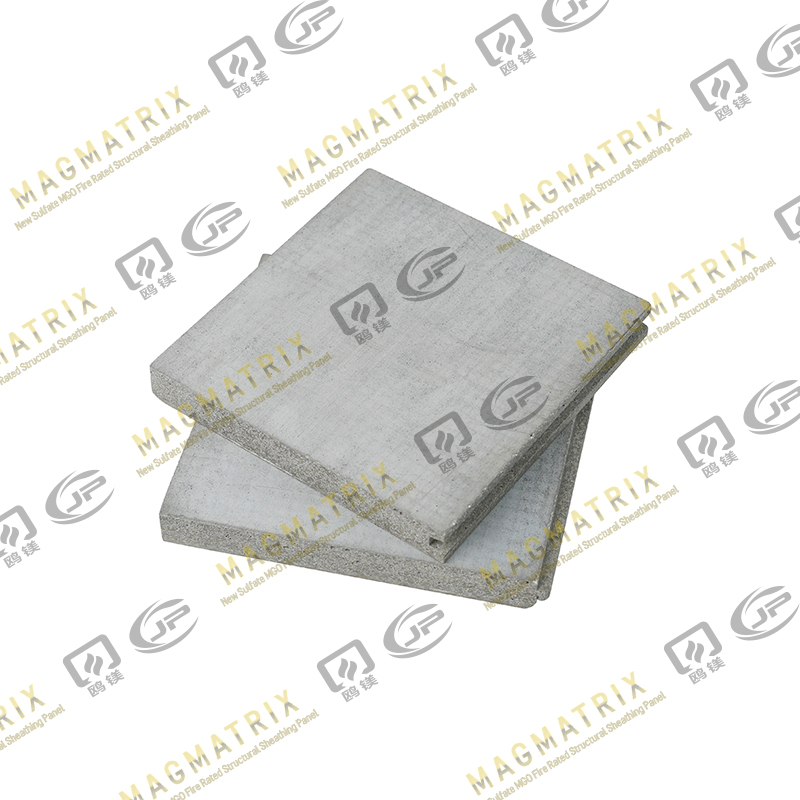 Perseverance MgO Subfloor Sheathing Board
Perseverance MgO Subfloor Sheathing Board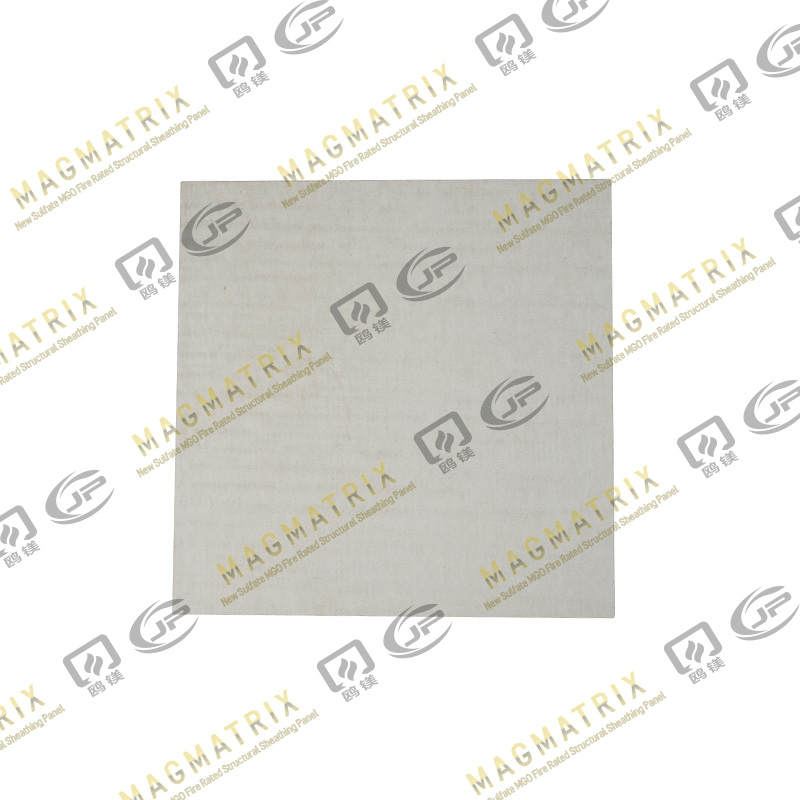 MagMatrix MgO Underlayment Panel/board
MagMatrix MgO Underlayment Panel/board


 English
English русский
русский Español
Español
